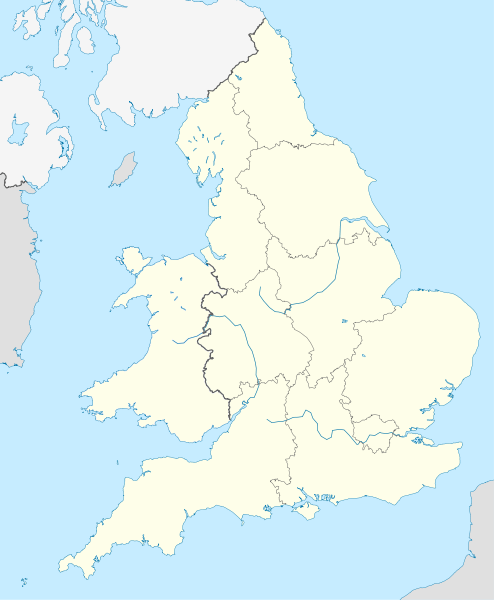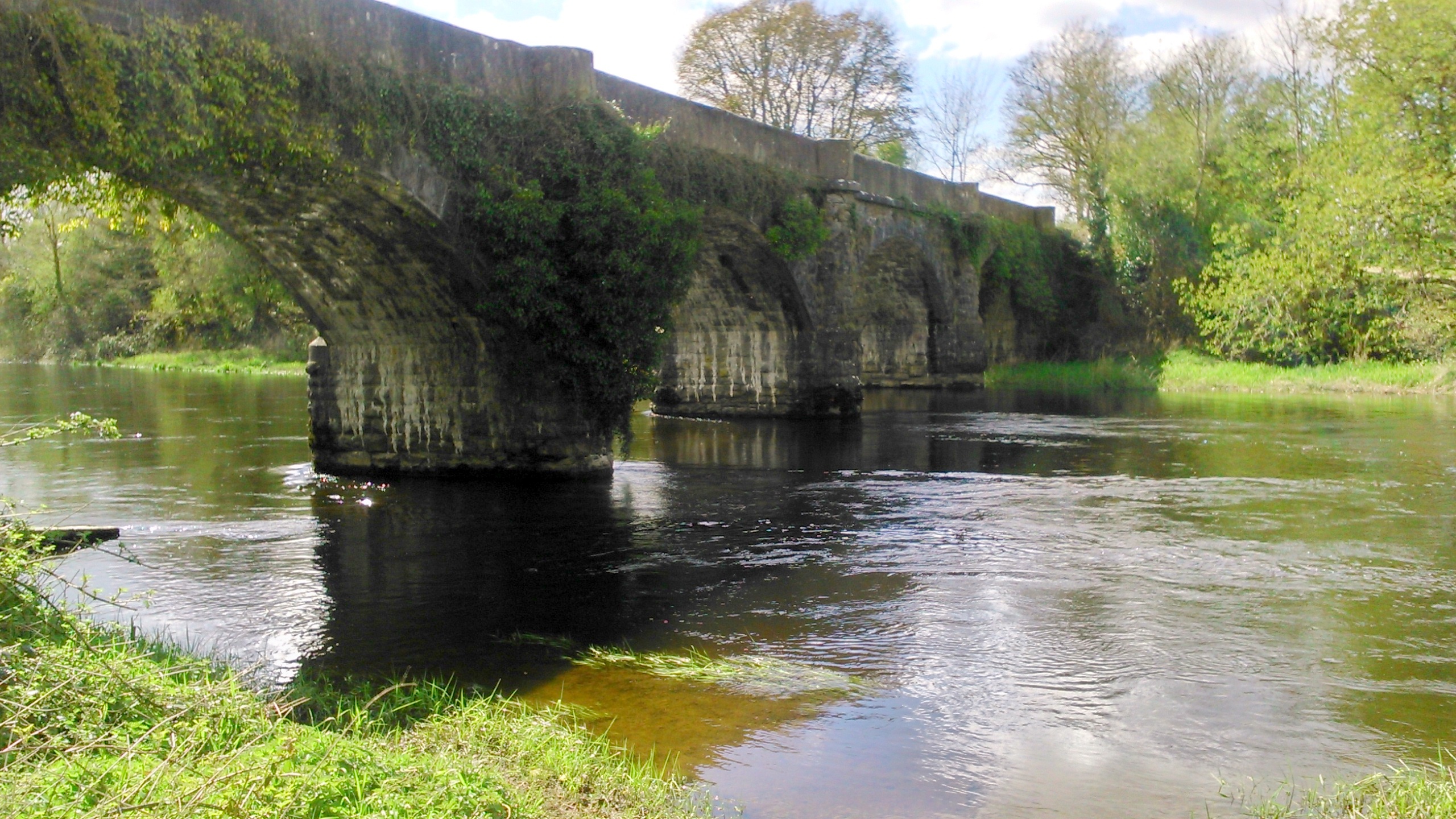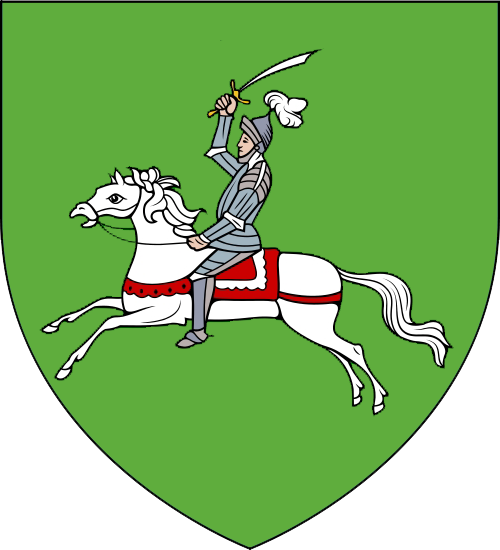|
Enniskillen
Enniskillen ( , from , ' Ceithlenn's island') is the largest town in County Fermanagh, Northern Ireland. It is in the middle of the county, between the Upper and Lower sections of Lough Erne. It had a population of 14,086 at the 2011 census. Enniskillen Castle was built in the 15th century as a stronghold of the Maguires, before coming under English control in the early 17th century. The castle and town were expanded during the Plantation of Ulster. It was the seat of local government for the former Fermanagh District Council, and is the county town of Fermanagh. The town is in a civil parish of the same name. Toponymy The town's name comes from the . This refers to Cethlenn, a figure in Irish mythology who may have been a goddess. Local legend has it that Cethlenn was wounded in battle by an arrow and attempted to swim across the River Erne, which surrounds the island, but she never reached the other side, so the island was named in reference to her. It has been anglicised m ... [...More Info...] [...Related Items...] OR: [Wikipedia] [Google] [Baidu] |
Enniskillen Castle
Enniskillen Castle is situated in Enniskillen, County Fermanagh, Northern Ireland. It was originally built in the 16th century and now contains the Fermanagh County Museum and a museum for the 5th Royal Inniskilling Dragoon Guards and Royal Inniskilling Fusiliers. History Hugh Maguire built a castle at Enniskillen in 1428. It was besieged by Captain John Dowdall's troops at the start of 1594 and fell on 2 February after a short siege, when the occupants were massacred after they surrendered. The castle was again under siege later that year but was relieved. The fortress finally fell to the Irish in 1595. The castle remained in Irish hands until it fell to the crown's Irish ally, Niall Garve O'Donnell in the summer of 1602. Captain William Cole remodelled and refurbished the castle adding the riverside tower at the south, known as the Watergate, in 1609. The castle was remodelled as "Castle Barracks" as part of the response to a threat of a French invasion in 1796. Castle Barra ... [...More Info...] [...Related Items...] OR: [Wikipedia] [Google] [Baidu] |
2021 United Kingdom Census
The decennial 2021 censuses of England and Wales and of Northern Ireland took place on 21 March 2021, and the census of Scotland took place on 20 March 2022. The censuses were administered by the Office for National Statistics (ONS) in England and Wales, by the Northern Ireland Statistics and Research Agency (NISRA) in Northern Ireland, and by the National Records of Scotland in Scotland. These were the first British censuses for which most of the data was gathered online, and two of them went ahead despite the COVID-19 pandemic, in part because the information obtained will assist government and public understanding of the pandemic's impact. Enumeration in Scotland was postponed, and took place in 2022, the plans for it having been delayed because of the pandemic. The censuses in 2021 and 2022 follows on from Beyond 2011, a project by the UK Statistics Authority to assess the value, cost, and alternatives to a census in 2021. The project recommended a census in 2021, and among ... [...More Info...] [...Related Items...] OR: [Wikipedia] [Google] [Baidu] |
River Erne
The River Erne ( , ga, Abhainn na hÉirne or ''An Éirne'') in the northwest of the island of Ireland, is the second-longest river in Ulster, flowing through Northern Ireland and the Republic of Ireland, and forming part of their border. Course The Erne rises on the east shoulder of Slieve Glah mountain three miles south of Cavan in County Cavan, Republic of Ireland, and flows 80 miles (129 km) through Lough Gowna, Lough Oughter and Upper and Lower Lough Erne, County Fermanagh, Northern Ireland, to the sea at Ballyshannon, County Donegal back in the Republic. The river is 120 kilometres long and is used for fly fishing for trout and salmon, with a number of fisheries along both the river itself and its tributaries. The town of Enniskillen is mostly situated on an island in the river, between Upper and Lower Lough Erne. It is linked to the River Shannon by the Shannon–Erne Waterway. The total catchment area of the River Erne is 4,372 km2. The long-term avera ... [...More Info...] [...Related Items...] OR: [Wikipedia] [Google] [Baidu] |
William Cole (planter)
Sir William Cole (c.1571–1653) was an English soldier and politician, who participated in the Plantation of Ulster and established a settler town at Enniskillen, County Fermanagh. Despite his initial loyalty to the Stuarts, he was a leading English Parliamentarian figure in the Irish Confederate Wars of the 1640s. Early life and arrival in Ireland Cole was born and raised in London, the only son of Emmanuel Cole of Devon. He was educated at Cambridge University before becoming a soldier in the English Army and fighting in the Low Countries during the Anglo-Spanish War. He arrived in Ireland in 1599 to fight in the Nine Years' War. He was commissioned as a lieutenant in 1601 and participated in the Siege of Kinsale in 1603, after which he was promoted to captain. In 1607, Cole was given command of Enniskillen Castle, which he later purchased outright in 1623. In 1611 he was granted 1,000 acres at Cornagrade and he purchased a further 1,000 acres at Dromskeagh in 1612. He construc ... [...More Info...] [...Related Items...] OR: [Wikipedia] [Google] [Baidu] |
Arney River
The Arney River is a small river in County Fermanagh, Northern Ireland, feeding from Lower Lough MacNean and into Upper Lough Erne. It meanders through a wide, flat Glacial Trough between the uplands of Fermanagh, Belmore Mountain and the Cuilcagh Mountains. The valley is characterised by wide flat lowlands enclosed by low hills. The Cladagh River drains into the Arney River. There are six bridging points on the Arney River, five of these are suitable for motorised vehicles, while one is located on private land near to the source of the river. Angling The river is often used by amateur anglers who are fishing for salmon and trout, however, the river is mainly populated by perch. Name There is a local tradition of an area beside the river called the Red Meadow alluding to blood soaking into the fields during the Battle of the Ford of the Biscuits. Alternatively the local brick making industry may also have given rise to this name as the river was lined with brick fields duri ... [...More Info...] [...Related Items...] OR: [Wikipedia] [Google] [Baidu] |
Battle Of The Ford Of The Biscuits
The Battle of the Ford of the Biscuits took place in Fermanagh, Ireland on 7 August 1594, during the Nine Years' War. A column of almost 650 English troops led by Sir Henry Duke was ambushed and defeated by a Gaelic Irish force under Hugh Maguire and Cormac MacBaron O'Neill at the Arney River. The English column had been sent to relieve and resupply Enniskillen Castle, which had been under siege by the Irish since May. The English suffered at least 56 killed and 69 wounded, and were forced to make a hasty retreat. The battle gained its name because the supplies of the English, largely hard biscuits, were left scattered and floating in the river. The battle was an early engagement of the Nine Years' War, and exposed the vulnerability of the English to ambushes in the wilder parts of Ulster with its thick woods and bogs. Background As part of the Tudor conquest of Ireland, a policy of surrender and regrant was introduced that involved the formal submission of the Gaelic lo ... [...More Info...] [...Related Items...] OR: [Wikipedia] [Google] [Baidu] |
Siege Of Enniskillen (1594)
The siege of Enniskillen took place at Enniskillen in Fermanagh, Ireland, in 1594 and 1595, during the Nine Years' War. In February 1594, the English had captured Enniskillen Castle from the Irish after a waterborne assault and massacred the defenders after they surrendered. From May 1594, an Irish army under Hugh Maguire and Cormac MacBaron O'Neill besieged the English garrison in the castle, and in August they defeated an English relief force. A second relief force was allowed to resupply the garrison, but the castle remained cut off. Eventually, in May 1595, the English garrison surrendered to the Irish and were then massacred. Background In 1593, Hugh Maguire, the Gaelic lord of Fermanagh, had objected to the behaviour of the newly-appointed English Crown sheriff Humphrey Willis. Willis had raided and plundered in Maguire's territory. Maguire was not strong enough to resist the sheriff, but after receiving troops from Hugh O'Neill, Earl of Tyrone, Maguire expelled Willis. ... [...More Info...] [...Related Items...] OR: [Wikipedia] [Google] [Baidu] |
Ulster
Ulster (; ga, Ulaidh or ''Cúige Uladh'' ; sco, label=Ulster Scots, Ulstèr or ''Ulster'') is one of the four traditional Irish provinces. It is made up of nine counties: six of these constitute Northern Ireland (a part of the United Kingdom); the remaining three are in the Republic of Ireland. It is the second-largest (after Munster) and second-most populous (after Leinster) of Ireland's four traditional provinces, with Belfast being its biggest city. Unlike the other provinces, Ulster has a high percentage of Protestants, making up almost half of its population. English is the main language and Ulster English the main dialect. A minority also speak Irish, and there are Gaeltachtaí (Irish-speaking regions) in southern County Londonderry, the Gaeltacht Quarter, Belfast, and in County Donegal; collectively, these three regions are home to a quarter of the total Gaeltacht population of Ireland. Ulster-Scots is also spoken. Lough Neagh, in the east, is the largest la ... [...More Info...] [...Related Items...] OR: [Wikipedia] [Google] [Baidu] |
Watergate (architecture)
A watergate (or water gate) is a fortified gate, leading directly from a castle or town wall directly on to a quay, river side or harbour. In medieval times it enabled people and supplies to reach the castle or fortification directly from the water, and equally allowed those within the castle direct access to water transport. Examples * Bristol Castle * Newport Castle * Southampton Castle * The Traitors' Gate at the Tower of London See also *Irrigation gate Sluice ( ) is a word for a channel controlled at its head by a movable gate which is called a sluice gate. A sluice gate is traditionally a wood or metal barrier sliding in grooves that are set in the sides of the waterway and can be considered ... References Types of gates Castle architecture City walls {{castle-stub ... [...More Info...] [...Related Items...] OR: [Wikipedia] [Google] [Baidu] |
Maguire (surname)
The MacGuire ( ) family is an Irish clan based in County Fermanagh. The name derives from the Gaelic , which is "son of Odhar" meaning "dun", "dark one". According to legend, this relates to the eleventh descendant of Colla da Chrich, great-grandson of Cormac mac Airt, who was monarch of Ireland about the middle of the third century. From the 13th to the 17th centuries, the MacGuires were kings of Fermanagh. Naming conventions The surname has been anglicized variously as McGuire, McGwire, McGwyre and most commonly, Maguire (from variant Irish spelling ''Mag Uidhir''). History The MacGuire sept is primarily associated with modern-day County Fermanagh. They possessed the entire county, also known as Maguire's Country, from about 1250 C.E. and maintained their independence as Lords of Fermanagh down to the reign of King James VI & I, when their country was confiscated like other parts of Ulster. The MacGuires supplied Chiefs or Princes to Fermanagh, from about A.D. 1264, ... [...More Info...] [...Related Items...] OR: [Wikipedia] [Google] [Baidu] |
Motte-and-bailey Castle
A motte-and-bailey castle is a European fortification with a wooden or stone keep situated on a raised area of ground called a motte, accompanied by a walled courtyard, or bailey, surrounded by a protective ditch and palisade. Relatively easy to build with unskilled labour, but still militarily formidable, these castles were built across northern Europe from the 10th century onwards, spreading from Normandy and Anjou in France, into the Holy Roman Empire in the 11th century. The Normans introduced the design into England and Wales. Motte-and-bailey castles were adopted in Scotland, Ireland, the Low Countries and Denmark in the 12th and 13th centuries. Windsor Castle, in England, is an example of a motte-and-bailey castle. By the end of the 13th century, the design was largely superseded by alternative forms of fortification, but the earthworks remain a prominent feature in many countries. Architecture Structures A motte-and-bailey castle was made up of two structures: a ... [...More Info...] [...Related Items...] OR: [Wikipedia] [Google] [Baidu] |







